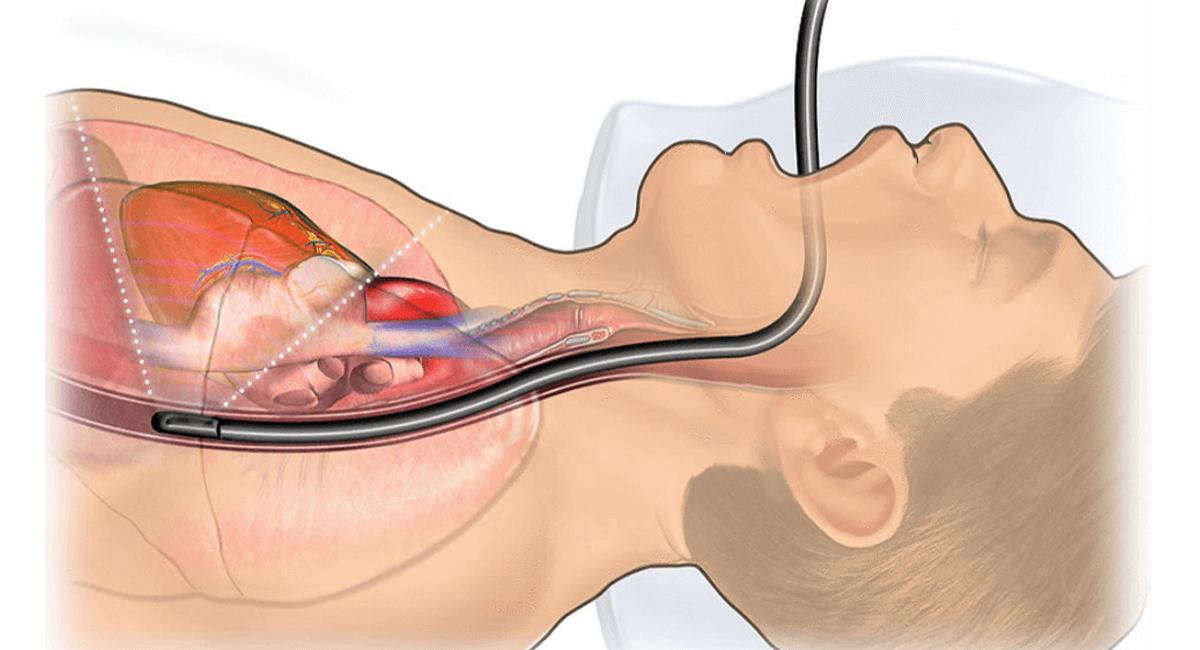
Introduction
Gastroscopy is a medical procedure that is used for investigative purposes primarily. Often referred to as upper endoscopy, it is done by using specialised equipment known as an endoscope. It comes in the form of a long and pliant tube introduced in the upper part of the digestive tract, allowing the medical professionals to view the oesophagus or gullet, stomach, and the first part of the small intestine known as the duodenum.
Description of Gastroscopy
This is a non-surgical procedure that can be done in an outpatient department of a medical facility or within a doctor’s office. The endoscope is fitted with a light source and a camera for ease of viewing and capturing the images that portray the condition of the upper GI tract. While the main reason for Gastroscopy is the investigative diagnosis, the endoscope may also be introduced for treating certain conditions related to the upper part of the digestive system. The images are viewed with the aid of a colour monitor.
Request an Appointment at Smiles
What are Reasons for Gastroscopy?
- ● Investigation: The endoscopy will enable the doctor to precisely view and examine the minute details of the area. This will help understand the cause behind the discomfort and pain and decide the line of treatment best suited to treat the underlying condition.
- ● Diagnosis: The professional may also use the endoscope to retrieve small amounts of tissue from the oesophagus, stomach or duodenum for close examination to make an accurate diagnosis.
- ● Treatment: The doctor may also find it practical to introduce specialised equipment via the endoscope to treat multiple problems. It can be used to cauterise a bleeding vessel, thus preventing acute blood loss. The oesophagus may be widened carefully so that growth inside or a foreign substance is removed without opening the area surgically.
What are Symptoms that Require Gastroscopy?
- ● Find it difficult to swallow food and/or medicines
- ● You have been losing weight without any apparent reason
- ● You feel pain in the upper abdomen or the chest that is not indicative of a heart ailment
- ● You have been vomiting regularly
- ● Your doctor may feel the need for a Gastroscopy for other investigation and confirmation of a diagnosis.
What Are the Types of Diagnoses Made with Gastroscopy?
- ● GERD / Barrett’s Esophagus: Gastroesophageal reflux disease, commonly termed GERD, is a condition where acid from the stomach passes through the opposite route, entering the oesophagus instead of the duodenum. The harsh acid may damage several oesophagal cells affecting its lining adversely. Ignoring the reflux symptoms may cause further damage by transitioning into Barrett’s Esophagus with the increased number of abnormal cells resulting in cancer eventually. Doctors will be able to examine the lining of the oesophagus and take a small tissue sample for biopsy and confirm the presence of cancerous cells.
- ● Ulcer: A gastroscopy will also display inflammation of the lining that may indicate duodenitis, esophagitis, and oesophagus gastritis. Also, it will detect the presence of infection in the concerned area of the digestive tract. Prolonged inflammation and long-standing infection may cause ulcers in the specific part.
- ● Cancerous Tumors: The procedure enables the doctor to view abnormal growth, bleeding and unnatural masses in the upper GI tract. Removing a small portion of the affected tissue or a tumour growing in the region can help confirm cancer.
- ● Oesophageal Stricture: You may be suffering from oesophagal stricture when you are unable to swallow normally. The professional will find out the cause of the oesophagus narrowing that may be due to faulty structure or presence of tumours, or even a foreign body lodged inside.
- ● Oesophageal Varices: The doctor may find the veins located on the oesophagal walls engorged and thickened abnormally. This indicates a risk of the blood vessels rupturing, eventually causing copious amounts of bleeding.
What Kind of Treatment is Done by Gastroscopy?
- ● Arrest of bleeding
- ● Removal of polyps and tumours
- ● Widening of the oesophagal opening
- ● Removal of foreign bodies lodged in the oesophagus or stomach
- ● Introduction of a percutaneous gastrostomy tube for tube feeding
- ● Banding of engorged veins in the oesophagal wall
What Are the Result Associated with Gastroscopy?
- Professionals who conduct the procedure may discuss the initial findings with you or the accompanying family members so that you remain prepared for the next step.
- The biopsy reports are sent to the primary doctor in charge of your treatment, with advice being sought for the next action.
- The final results will be provided in the form of a detailed report that will be sent to your primary doctor as well. The doctor will discuss the results with you and advise you about the required line of treatment that needs to be followed.
What Are the Risk Associated with Gastroscopy?
- ● Extensive bleeding that mat may require a blood transfusion.
- ● The onset of infection. This can be treated successfully with antibiotics.
- ● Tear of the tissue within the digestive tract. This is extremely rare, with only 1 case being reported for every 11,000 Gastroscopy procedures.
Request an Appointment at Smiles
FAQ's
What is the Duration of a Gastroscopy Procedure?
Will I be Conscious During the Procedure?
Is There any Pain Associated with Gastroscopy?
Will My Family and Friends Remain with Me?
Should I Have a Full Breakfast on the Day of a Gastroscopy?
Need Help?
For any Information about our Locations, Doctors or Treatments.
